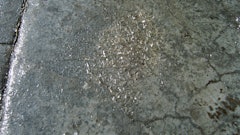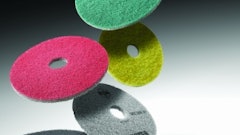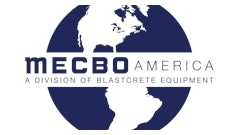
If you’re looking to finish an exposed pea gravel placement of concrete, you can use a surface retarder, sugar water with a sprayer, or return after a couple of days with an acid wash, etc. The brothers at Catelli’s Excavation Inc., however, rocked the internet with a video using a rather unconventional method: Coca-Cola.
Their YouTube short has over 7 million views (and counting) in two weeks.
Located out of Sequim, Washington, Catelli’s Excavation is owned by Clancy Catelli. The company started doing excavation work, rock walls, and drainage projects. Soon he noticed many of their demo customers were having a difficult time finding a concrete contractor in town. The city is home to about 8,125 people and sits roughly 2.5 hours northwest of Seattle.
Having experience placing concrete, he started providing concrete work. Ten years later, concrete has become the company’s bread and butter. Now, with brother Frank Catelli, they’ve found a niche in the community by utilizing their larger excavation equipment.
Their equipment fleet includes:
- Cat 307.5 mini excavator (from 2021)
- Mack dump truck
- Cat D4C dozer
- Kubota KX040 compact excavator
- Kubota skid steer
- and an asphalt roller – to compact the sub-base
Yeah, Coca-Cola on Concrete
Catelli Excavation was hired to remove and replace about 40 tons of concrete from an apartment building. The project also included about 700-800 sq.ft. of sidewalks around the entire building.
“People know about [sugar] water, but not everybody uses Coca-Cola to etch the concrete,” says Clancy Catelli.
Taking advantage of their northwestern location, the project was designed to feature exposed pea gravel. “I feel like the exposed aggregate gets a lot of either bad or good rap because a lot of people can’t get it because you need that smooth pea gravel river rock to do it,” says Clancy Catelli. Comments on the video include people appreciating a “60s look”. Others say that they are glad someone was doing something different - something other than a broom finish.
“I sell it to people because it’s durable…there’s no surface cream. For someone that wants low maintenance, we always try to sell them on that – it’s a little more forgiving,” he says.
Frank adds that the exposed pea gravel provides an opportunity to hide wear and tear well – things like oil drippings, discoloration, or cracks. “It doesn’t catch your eye as easily as like a broom finish would where you would see all the mistakes or things that happened to that concrete. It’s low maintenance and looks exactly how it did when you poured it for a really long time.”
 Catelli Excavating Inc. - Photo by Frank Catelli
Catelli Excavating Inc. - Photo by Frank Catelli
The Process
Catelli explains their process. After placing the concrete, screeding, and bull floating, they set the concrete sit for 3-4 hours.
“The big indicator for us is if you take your hand [and] pressed down on the concrete, and you feel the rocks underneath and you push down. You don’t want to be able to push those rocks down – you want them to be pretty solid in there. That’s a good indicator to me that it’s ready to be sugared because those rocks have set in the concrete,” says Clancy Catelli.
At that time they spray the Coca-Cola, letting it sit, then clean it off with a pressure washer with a wide fan or a brass garden nozzle. Their tip: when washing, go slow and use a broom to move the slurry off. “You want to be able to walk on it,” says Clancy Catelli. They typically let the soda sit for about an hour and a half.
The aggregate was 60% 3/8 pea gravel and 40% sand. The consistent rock size was key. The mix also included 1% of an admixture to speed up the curing process with hot water. Reinforcement was a 3 ft. grid of #3 rebar.
While the video seems warm and sunny, it was filmed in early February in 30 to 40° F weather. Reflecting on the day, the Catelli’s say that it may even snowed.
Ultimately, about 8 bottles of Coke was used. Responding to many of the comments online that sugar water would be cheaper, Frank points to convenience. “Any store you go into has soda,” says Frank Catelli. “If you have sugar water, you have to mix it in. It’s not carbonated. You’re going to have to have a backpack sprayer. And sugar water gets sticky so it can clog lines and you have to wash that.”
For the Catelli brothers who only place a handful of exposed aggregate projects a year, it was easier to “just pick up a bottle of soda.”
 Catelli Excavating Inc. - Photo by Frank Catelli
Catelli Excavating Inc. - Photo by Frank Catelli
Timing
The body of the concrete and the slurry cure at different speeds. In Frank’s online research and in their own experience, the sugar slows down the slurry’s ability to harden. He explains: “You have two different parts of the concrete curing at different speeds. Once the body gets hard enough, you can wash away that cream – exposing it.”
If you don’t let the concrete cure at a different rate, however, you run the risk of accidentally taking too much cream from between the rocks when you go to wash it off. This could loosen the rocks, cause blowout, pitting, or (if you used a pressure washer too quickly) zebra striping. Not applying a surface retardant at all with hopes of washing the slurry away before it sets can also set yourself up for potentially damaging the surface.
“You might just blow out a bunch of rocks and make it look awful because pitting is by far the ugliest part of it,” warns Frank Catelli.
On Going Viral
Catelli’s Excavating Inc. started posting videos in February 2024 – roughly a month and a half before the video went viral on YouTube. They didn’t want to make long-form videos and kept posting shorts as they set forms, poured concrete, and while finishing. The idea, Frank says, wasn’t to create a how-to or DIY page – merely to document things on their projects.
If interested in putting the effort on your own, Frank’s advice is simple: “I think a lot of people think you need fancy equipment. I do everything on my phone.” He’ll record short clips throughout the day and then set the phone aside to finish the task. He uses a free video editor app.
“The videos that I’ve always wanted and liked to watch are people who are doing something, like woodworking, cabinet making – start to finish projects. That kind of stuff was always captivating,” says Frank. “I think a lot of people like that kind of stuff. So, I’m just going to keep doing it.”


























